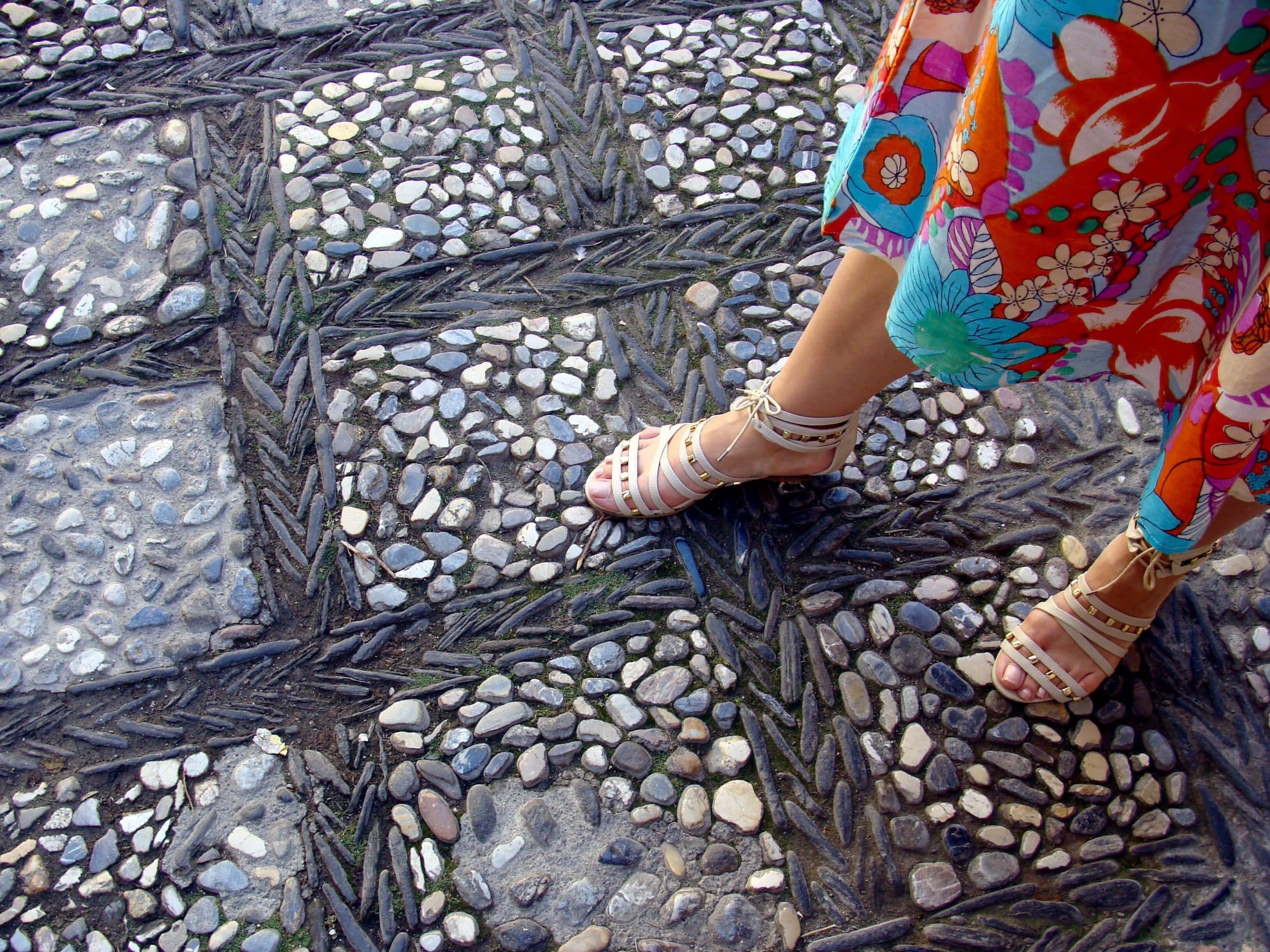How Does Specialty Footwear Design Influence Injury Prevention in Long-Distance Trail Runners?

In the world of long-distance trail running, shoes are not just a fashion statement or a simple tool of convenience – they are a potent weapon. A weapon that can either protect you from injuries or potentially become the root cause of them. The relationship between footwear and injury prevention, particularly in sports like long-distance trail running, is a complex web of interconnected factors. We’ll provide an in-depth analysis of this relationship, highlighting the role of specialty footwear in minimizing the risk of injuries.
Role of Footwear in Running Injuries
Running is a high-impact sport. Every time your foot hits the ground, it absorbs a force many times your body weight. This puts a significant amount of stress on your feet, making them highly susceptible to injuries. In this section, we’ll discuss how the design of your shoes can influence injury prevention.
A lire aussi : How Can Non-Dominant Hand Drills Enhance Skill Development in Basketball Point Guards?
According to a study published in PMC, poor footwear choice is a common cause of injuries for runners. Shoes that do not provide the right support or do not fit properly can lead to a variety of problems, like blisters, plantar fasciitis, and stress fractures. The study suggests that runners should prioritize choosing shoes that provide ample cushioning, support, and fit well to reduce the risk of such injuries.
The Evolution of Running Shoes
Running shoes have evolved significantly over the years. Earlier athletic shoes were primarily designed for comfort and protection. However, as more research was conducted, shoe manufacturers began to focus on reducing injuries and improving performance. This section will delve into the evolution of running shoes and how it impacts injury prevention.
A lire en complément : Can Periodization of Training Prevent Overtraining in Youth Competitive Swimmers?
The revolution in running shoe design started with the scholar and engineer, Bill Bowerman. He used his knowledge and experience as a track coach to create a shoe that was both lightweight and could provide adequate support. His invention led to the development of the Nike Cortez, which was a game-changer in the world of athletic shoes.
According to a study on Google Scholar, the evolution of running shoes has been heavily influenced by biomechanics. The study found that modern running shoes are designed to minimize impact and provide support to specific areas of the foot that are most vulnerable to injuries. They have cushioning to reduce impact forces, mid-foot support to prevent over-pronation, and flexible forefoot design to enhance the foot’s natural movement.
How Specialty Footwear Influences Injury Prevention
Specialty footwear in running refers to shoes specifically designed for different types of running, like trail running, road running, or track running. Each type of running presents unique challenges and risks, and the shoes are designed to tackle these specific issues. This section will provide a detailed analysis of how this specialized design helps in injury prevention.
For instance, trail running shoes are designed to provide superior grip and stability to handle the rough and uneven terrain. They also have durable uppers to protect the foot from sharp objects and a reinforced toe box to prevent injuries from accidental stubbing. On the other hand, road running shoes are lightweight and have enhanced cushioning to reduce the impact on hard surfaces.
The Role of Science in Specialty Footwear Design
Scientific research plays a crucial role in the design of specialty footwear. Numerous studies and tests are conducted to understand the biomechanics of running, the cause of injuries, and how different shoe designs can help prevent these injuries. In this part, we’ll discuss the role of science in specialty footwear design.
According to a study published on PubMed, researchers used motion analysis techniques to understand the foot’s movement during running. They found that different runners have different running styles (pronation), and these styles can significantly influence the risk of injuries. This finding led to the development of shoes designed to cater to different pronation styles.
Furthermore, research on Crossref shows that gait analysis is another crucial aspect of specialty footwear design. By understanding how a runner’s foot lands and rolls during each stride, shoe designers can create footwear that reduces the stress on high-risk areas and thus minimize the risk of injuries.
The Impact of Incorrect Footwear Choices on Injuries
While specialty footwear can significantly reduce the risk of injuries, incorrect footwear choices can have the opposite effect. Wearing the wrong type of shoes for your running style or terrain can increase the risk of injuries. In this final section, we’ll discuss the impact of incorrect footwear choices on injuries.
Wearing shoes that do not provide enough support or cushioning can lead to a range of injuries, from minor ones like blisters and corns to major ones like stress fractures and Achilles tendonitis. A study published in PMC shows that wearing the wrong type of shoes can also lead to chronic injuries, as it can alter the foot’s biomechanics and put more stress on certain areas.
Therefore, it is crucial that long-distance trail runners choose their footwear wisely. Specialty footwear can provide the necessary support and protection to keep runners safe and injury-free. By understanding your running style and choosing shoes designed for that style, you can significantly reduce your risk of injuries and improve your running performance.
The Science Behind Specialty Footwear Design
Scientific research provides an indispensable foundation for the innovation seen in specialty footwear design. Numerous studies conducted support designers in understanding the biomechanics of running, potential injury causes, and how different shoe designs can help avert these injuries. In this section, we delve into the role of science in the design of specialty footwear.
According to an article on PubMed, researchers made use of motion analysis techniques to explore the movement patterns of the foot during running. They uncovered the existence of various running styles (pronation), which can significantly affect injury risk. This revelation has led to running shoes designed to cater to different pronation styles, offering tailored support and prevention.
Moreover, a study found on Crossref Google highlights that gait analysis is a crucial component in the design process of specialty footwear. By examining how a runner’s foot lands and rolls during each stride, shoe designers are equipped with the insights needed to create footwear to reduce stress on high-risk areas, subsequently minimizing injury risk.
Making the Right Footwear Choices for Injury Prevention
While specialty footwear can significantly reduce injury risk, the wrong footwear choice can have the opposite effect. Wearing shoes that do not match your running style or terrain can increase the likelihood of injuries. To conclude this analysis, we look at the impact of incorrect footwear choices on injuries and the importance of making informed decisions.
Running shoes that do not provide sufficient support or cushioning can lead to a wide range of injuries. These vary from minor issues such as blisters and corns to more severe problems like stress fractures and Achilles tendonitis. A study published in PMC demonstrates that wearing inappropriate shoes can even lead to chronic injuries, as the shoes can alter the foot’s biomechanics, placing increased stress on certain areas.
Therefore, it’s crucial for long-distance trail runners to make wise footwear choices. Specialty footwear can deliver the necessary support and protection to maintain runners’ safety and keep them injury-free. Understanding your individual running style and choosing shoes designed specifically for that style can significantly decrease your injury risk and enhance your running performance.
In conclusion, the science behind specialty footwear design is integral to injury prevention in long-distance trail running. The right pair of running shoes, designed to cater to your unique running style and biomechanics, can make a significant difference in reducing injury risk. Making informed decisions about your running footwear is a small step that can lead to great strides in your running performance.
